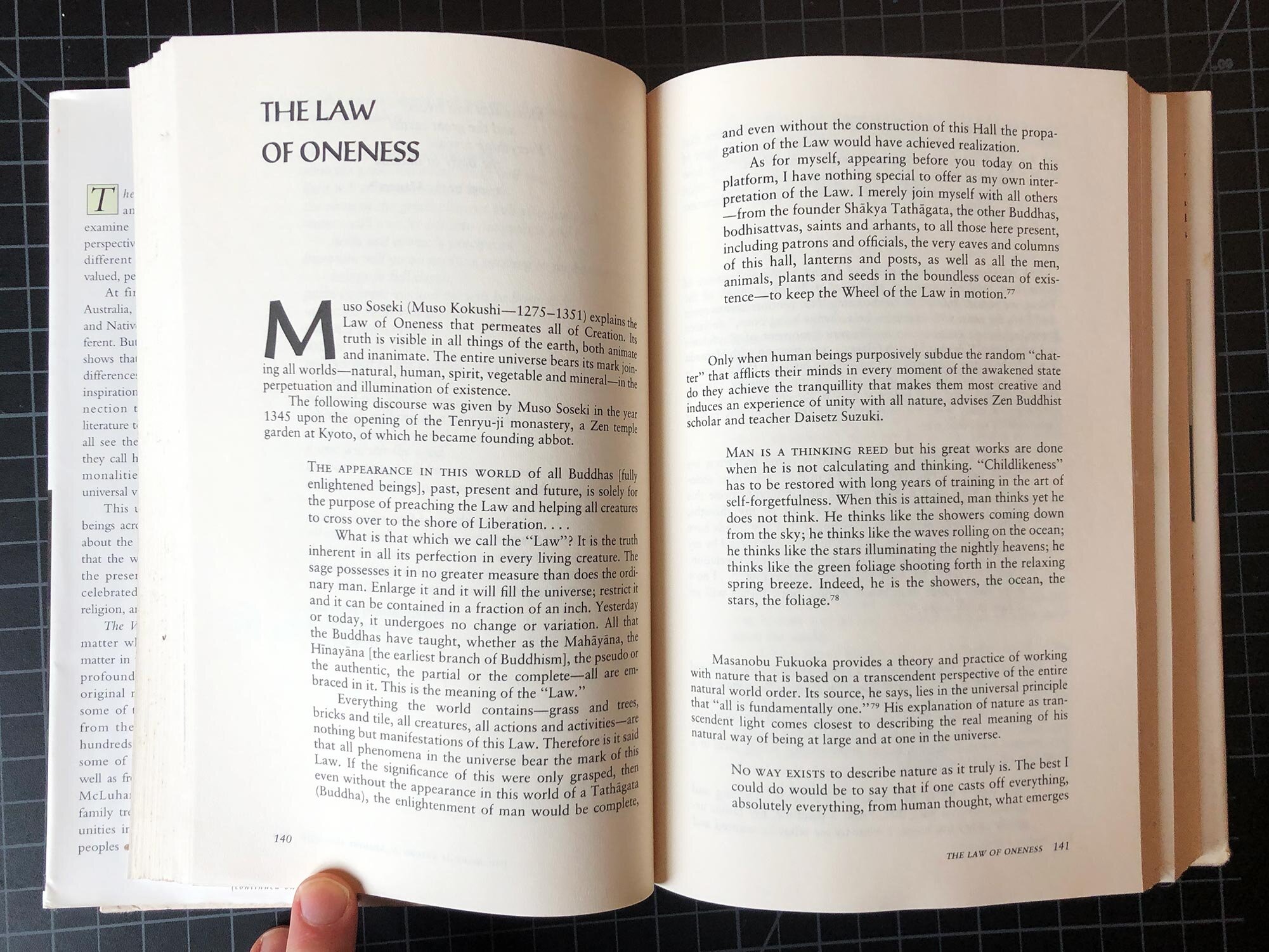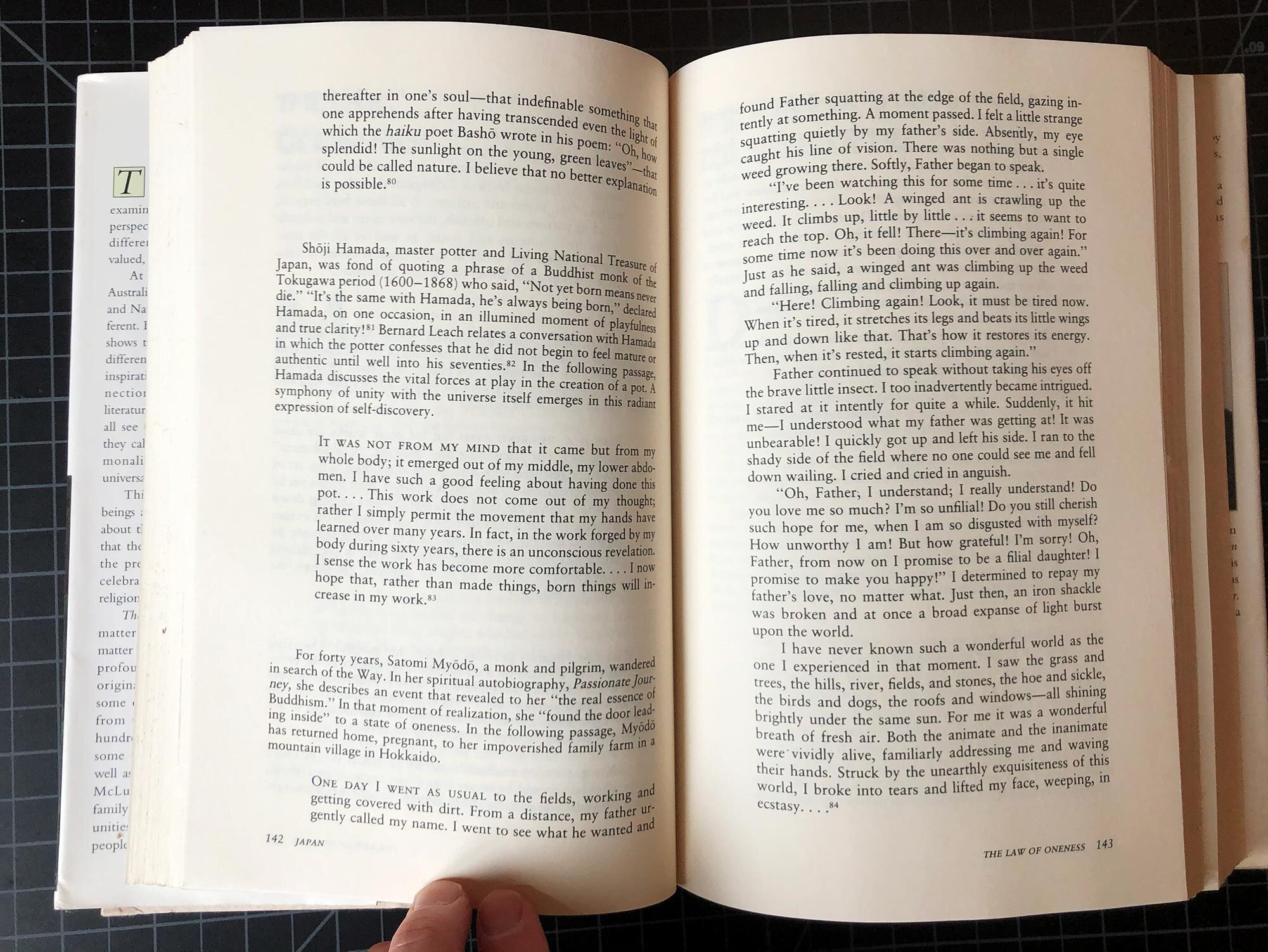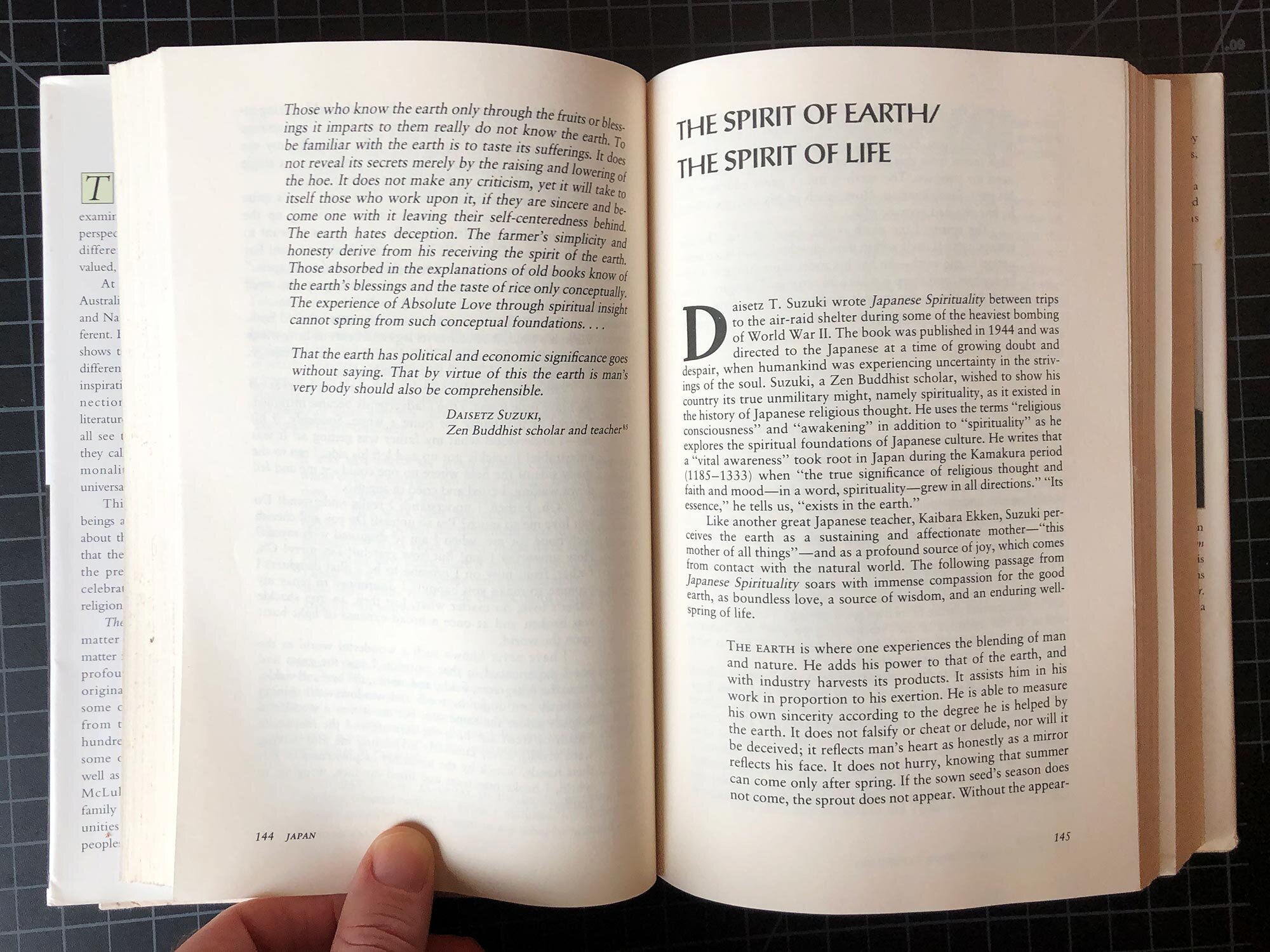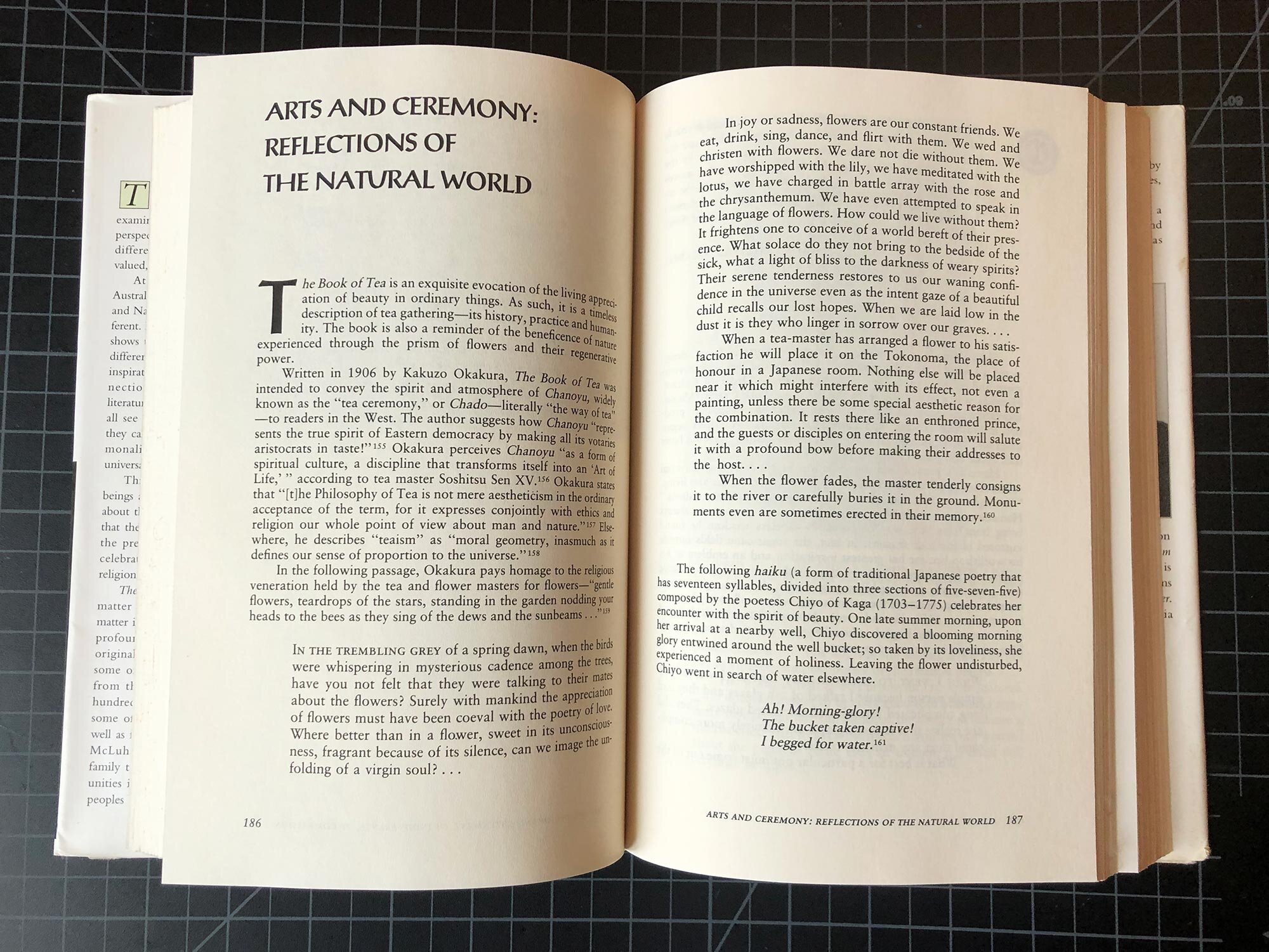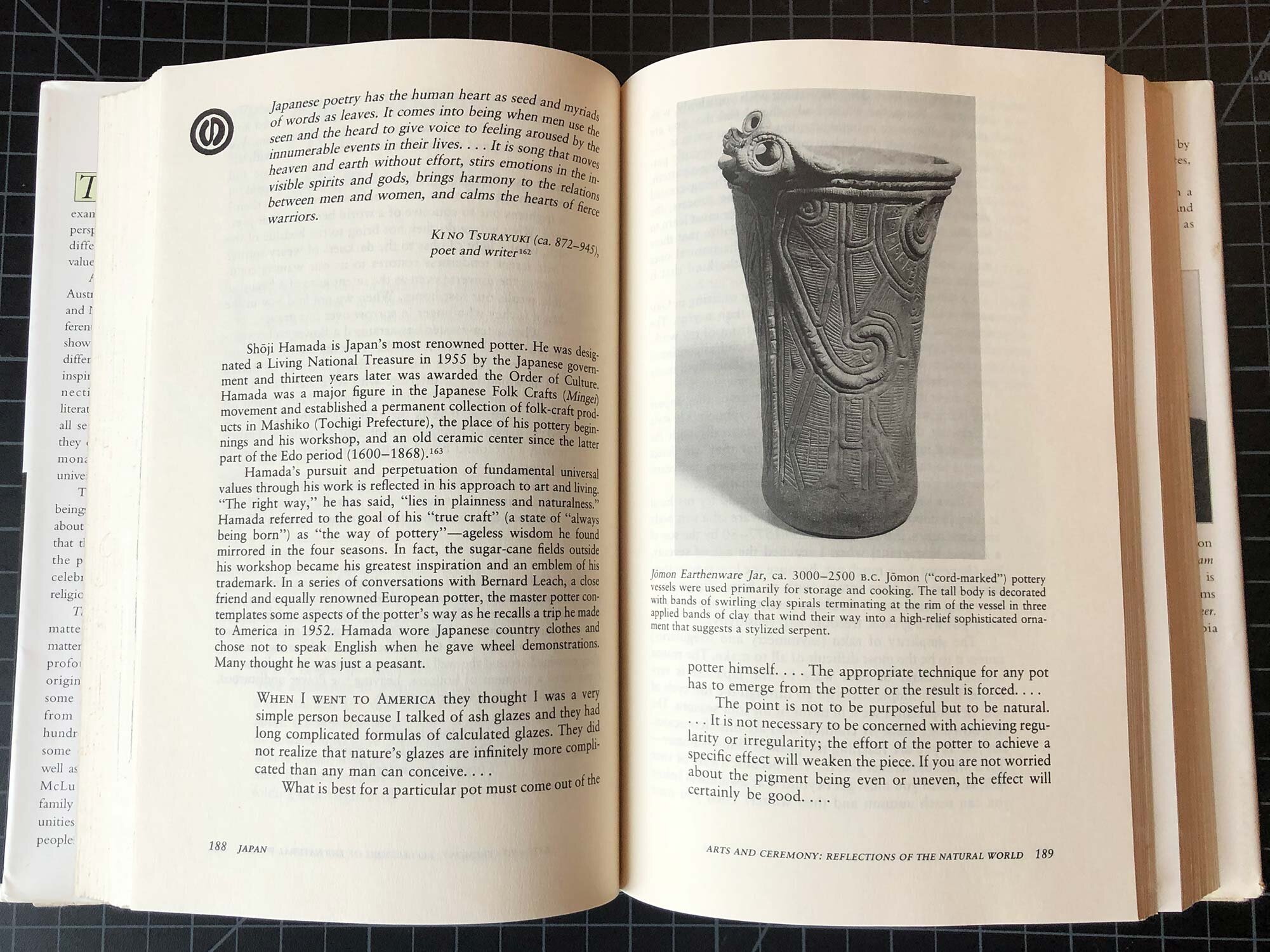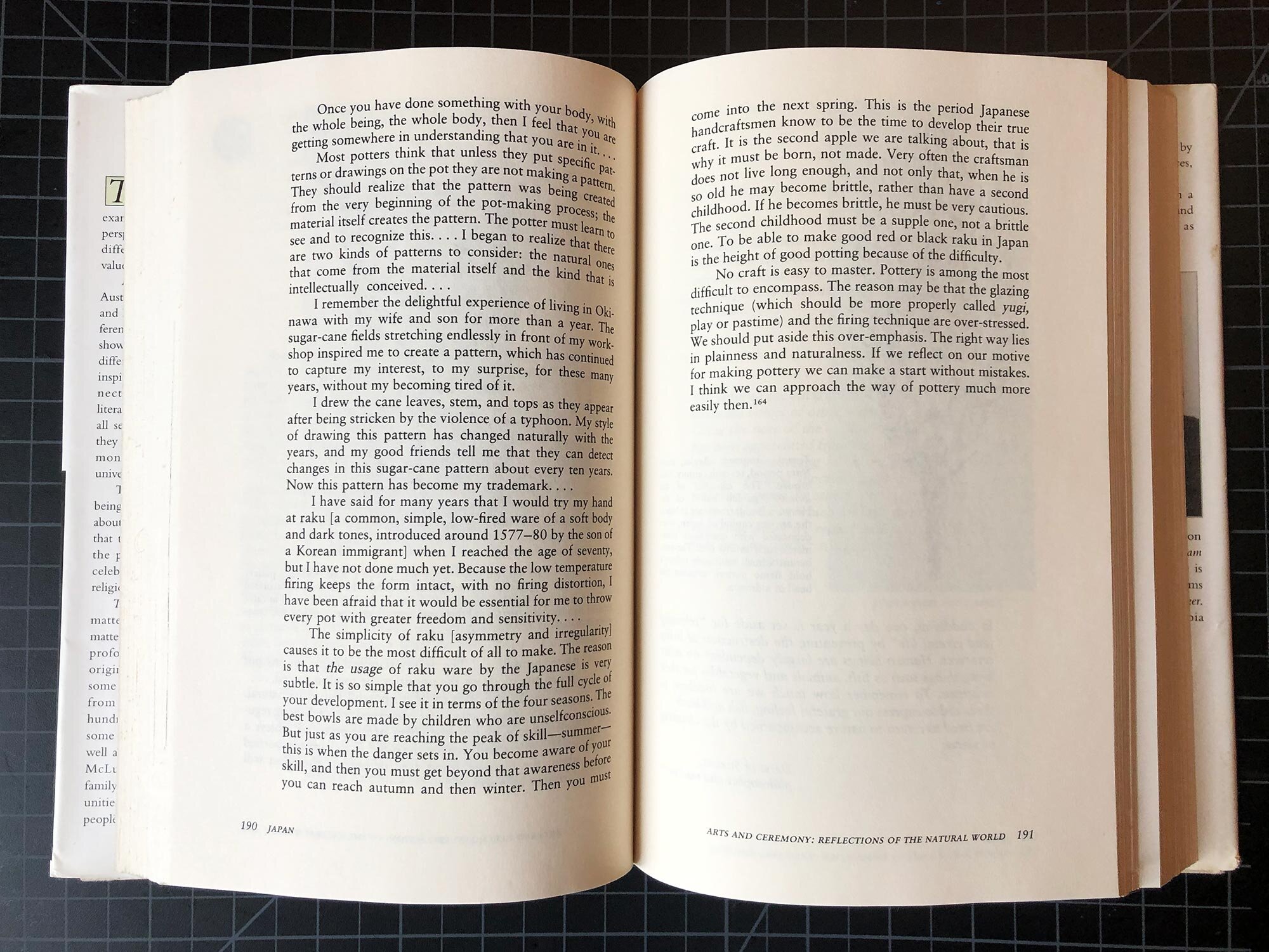Most potters think that unless they put specific patterns or drawings on the pot they are not making a pattern. They should realize that the pattern was being created from the very beginning of the pot-making process; the material itself creates the pattern. The potter must learn to see and to recognize this. . . I began to realize that there are two kinds of patterns to consider: the natural ones that come from the material itself and the kind that is intellectually conceived. . .
I remember the delightful experience of living in Okinawa with my wife and son for more than a year. The sugar-cane fields stretching endlessly in front of my workshop inspired me to create a pattern, which has continued to capture my interest, to my surprise, for these many years, without my becoming tired of it.
I drew the cane leaves, stem, and tops as they appear after being stricken by the violence of the typhoon. My style of drawing this pattern has changed naturally with the years, and my good friends tell me that they can detect changes in this sugar-cane pattern about every ten years. Now this pattern has become my trademark.
I have said for many years that I would try my hand at raku when I reached the age of seventy, but I have not done much yet. Because the low temperature firing keeps the form intact, with no firing distortion, I have been afraid that it would be essential for me to throw every pot with greater freedom and sensitivity. . .
The simplicity of raku [asymmetry and iregularity] cause it to be the most difficult of all to make. The reason is that the usage of raku ware by the Japanese is very subtle. It is so simple that you go through the full cycle of your development. I see it in terms of the four seasons. The best bowls are made by children who are unselfconscious. But just as you are reaching the peak of skill—summer—this is when the danger sets in. You become aware of your skill, and then you must get beyond that awareness before you can reach autumn and winter. Then you must come into the next spring. This is the period Japanese handcraftsmen know to be the time to develop their true craft. It is the second apple we are talking about, that is why it must be born, not made. Very often the craftsman does not live long enough, and not only that, when he is so old he may become brittle, rather than have a second childhood. If he becomes brittle, he must be very cautious. The second childhood must be the supple one, not a brittle one. To be able to make a good red or black raku in Japan is the heigh of good potting because of the difficulty.
No craft is easy to master. Pottery is among the most difficult to encompass. The reason may be that the glazing technique (which should be more properly called yugi, play or pastime) and the firing technique are over-stressed. We should put aside this over-emphasis. The right way lies in plainness and naturalness. If we reflect on our motive for making pottery we can make a start without mistakes. I think we can approach the way of pottery much more easily then.
For more on Shoji Hamada, check out Hamada Potter, by Bernard Leach. (Shop at Amazon | Shop at Abebooks)
For more essays like this, find a used copy of The Way of the Earth by T.C. McLuhan (Shop at Amazon | Shop at Abebooks)
Flip through the pages cited in this post:


